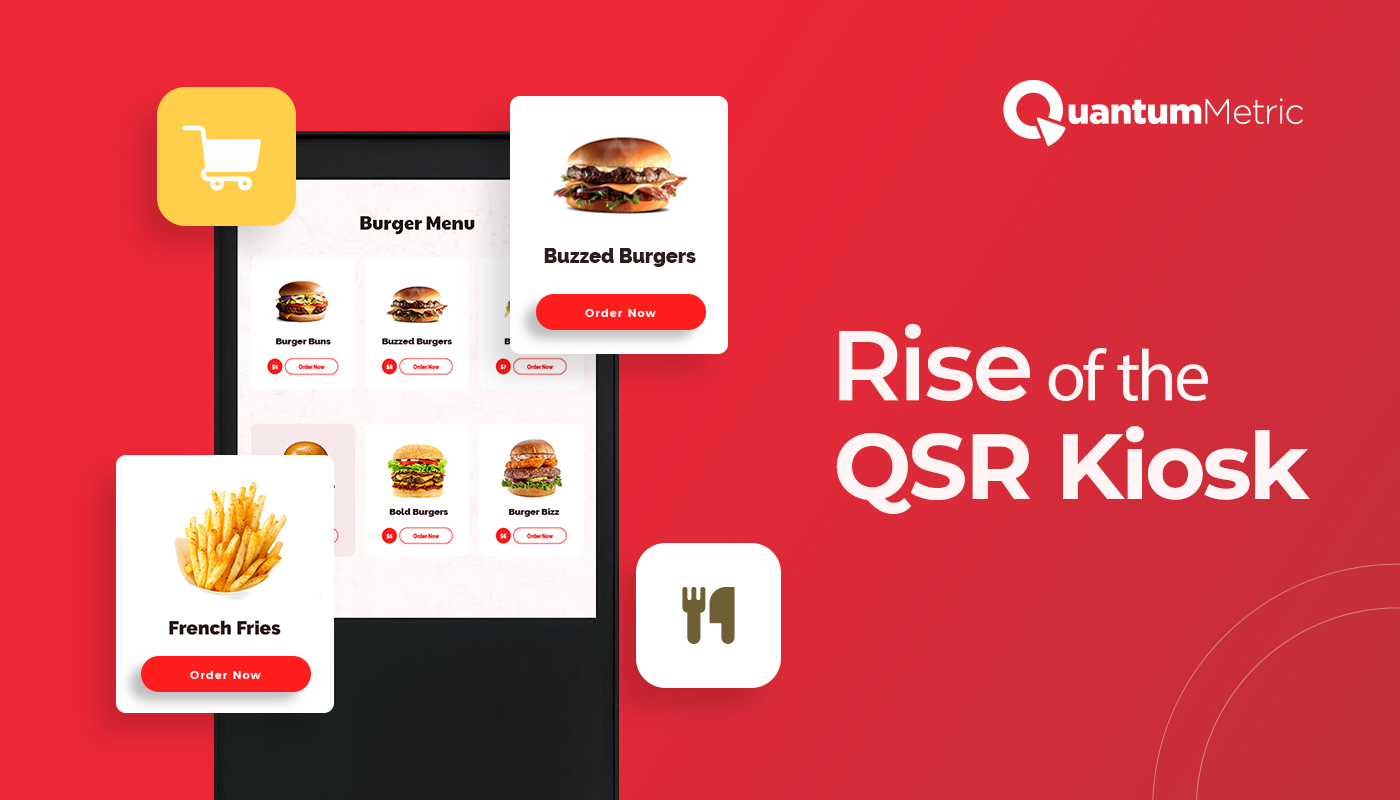The rise of the QSR kiosk in the United States.

Subway, McDonald’s, Burger King, Arby’s, and other fast food chains started experimenting with in-restaurant kiosks way back in 2006, before Apple launched the first iPhone. Here’s a look at the rise of the QSR kiosk.
While US adoption of kiosk technology has been relatively slow, kiosks have grown significantly in popularity across Europe, where they are common in airports, train stations, and other major transportation hubs.
2018 saw another boom in kiosks. QSRs learned (to no surprise) that extraordinarily long lines drove customers away, especially during peak meal times. But high volume restaurants, especially in cities and transit hubs, can increase order-taking capacity by integrating kiosks into their in-store strategy.
Quick service restaurant executives also discovered through various pilot programs that customers of all ages, from tech-resistant boomers to digital native Gen Z’ers, enjoy ordering their meals with kiosks.
Today’s tech-savvy consumers expect more control over their shopping experiences, and ordering from a QSR is no exception. QSR kiosks allow customers to take their time ordering without the pressure of a human waiting for them. This eases the anxiety customers face when they arrive at the front of the line, only to question whether or not they wanted a hamburger or a chicken sandwich.
In addition, QSR kiosks enable customers to customize their orders, since they provide suggestions for what may go well with their main dish. This method of upselling eases the burden on cashiers, who likely don’t want to remind every customer that they should add fries and a diet soda to their meal.
Plus, when the kiosk says, “Customers that ordered this meal also added [x],” the QSR maintains a sense of authority, since the suggestion is based on actual data.
Now, with the coronavirus pandemic continuing to plague the globe, QSR kiosks are back in focus. Many consumers no longer want to interact with cashiers, fearing they will contract the virus. It may very well be that Covid-19 is the final straw—the force that makes QSR kiosk ordering mainstream across US-based QSRs.
“Would you like any add-ons today?”
Recent studies have shown that 65% present of QSR customers would visit restaurants more frequently if they could order using self-service kiosks. And 30% said they would rather order from a kiosk than a cashier, given that the lines were about the same wait.
It turns out that kiosks lead the average customer to spend 15-30% more money. Customers are more likely to purchase add-ons—like dessert or a side of fries—when ordering from a kiosk. After Subway decided to experiment with kiosks, executives learned that customers ordering from kiosks were more likely to add toppings that cost extra, like bacon, and upgrade their order to a meal that includes a drink with a side of chips or a cookie.
Even before the pandemic, Wendy’s executives also started to notice how kiosks enhanced the customer experience by speeding up the ordering process. The fast food chain discovered that kiosks help to increase order capacity (the number of orders that can be completed in a given amount of time). This empowered Wendy’s franchises to double down on food preparation and enhance the quality of their meals.
Some franchisees may be hesitant to adopt another costly new technology, especially kiosks, which require a large amount of capital upfront.
However, Wendy’s, which now has kiosks in about two-thirds of their restaurants, is already reaping the benefits. “We are trying to convince the rest of the system to actually make the capital investment because we think it has a return,” Wendy’s CFO Gunther Plosch Plosh said in an interview with The Motley Fool.
Besides improving customer satisfaction, kiosks reduce overall tech costs and benefit the QSR operational model. And if a customer is struggling with the kiosk, they can receive 1-on-1 assistance from a team member, without the added effort of exchanging money.
QSR kiosk challenges.
While kiosks are a proven asset for QSRs, this new technology also introduces more technological challenges for companies. Like mobile devices and desktops, kiosks require IT teams to push internal updates, monitor data, replace broken parts, and ensure that user friction remains at a minimum.
Corporate offices must update menus regularly, which can lead to glitchy experiences across store tablets.
Worse case scenario? The bugs back store orders up, creating an even larger headache for QSR workers.
To overcome these hurdles, QSRs can benefit from using Quantum Metric, the Continuous Product Design platform that helps business and technical teams identify and address costly user experience issues and technical errors across your company’s digital portfolio, including kiosks.
How Quantum Metric can help enhance the QSR kiosk digital experience.
Even before the pandemic struck, QSRs like McDonald’s and Taco Bell planned to significantly increase the number of ordering kiosks across their US-based restaurants.
The reason for the sudden interest? Kiosks drive higher revenues with larger returns, even after the upfront capital investment.
If you’re a QSR looking to optimize the digital experience across your kiosks, Quantum Metric has the right tools for you.
With our Continuous Product Design platform, your team can:
- Receive alerts when an error happens too frequently on any single kiosk
- Track important metrics like completed orders and average order value (AOV)
- Segment demographics by kiosk ID, store ID, region, and country
- Monitor the order funnel to identify friction or errors negatively impacting conversion, especially those that prompt the customer to order with a human cashier
- Benefit from watching session replays of the entire order experience using Quantum Metric’s uniquely secure data capture method, device level encryption, which ensures that any personal information is encrypted and secured. Sensitive data is encrypted on your customer’s device, so data is always safeguarded when it is sent and stored.
- Track general feature usage and engagement, including usage time, menu views, customized views, and support views.
Interested in learning more about how the coronavirus pandemic has impacted the quick service restaurant industry?
Discover the top 10 QSR trends for 2021.







